How to Write a Winning Sales Proposal [Templates + Examples]
Casey O'Connor
Although each stage of the sales cycle is important, the sales proposal is perhaps the most consequential component of the process for most prospective buyers.
A sales proposal is essentially a sales pitch structured into a formalized document. Sales reps write sales proposals to communicate the value they can provide to prospects, as well as outline offer specifics.
The sales proposal is a make-or-break moment for most sales opportunities, and it’s important that sales reps master the art of writing them effectively. In this article, we’ll go over everything you need to know about sales proposals, including best practices, templates, a process for writing your own, and several examples.
Here’s what we’ll cover:
- What Is a Sales Proposal?
- How to Create a Sales Proposal
- Best Practices for Writing a Winning Proposal
- Sales Proposal Templates and Examples
- What to Do After You Send Your Proposal
What Is a Sales Proposal?
A sales proposal is a structured, formalized document that sales reps use during the sales cycle that demonstrates to the buyer:
- A deep understanding of their pain points, and how your solution will solve them
- The value and potential ROI of the offer
- Costs, fees, and other terms related to the offer
- Alignment between their brand values and yours
Sales proposals — also sometimes known as business proposals, project proposals, or executive summaries — outline for prospects the timeline, deliverables, intended outcomes, and costs involved with buying your product.
A great sales proposal is about much more than just the logistics of the product or offer. It also needs to include bigger-picture content that gives the buyer confidence in your solution.
Effective sales proposals are incredibly important to the sales process. In fact, more than half (54%) of managers report sales proposals as being one of the important sales proposals to track. They help shorten the sales cycle, increase win rates, and boost customer loyalty and referrals.
How to Create a Sales Proposal
The best sales proposals are highly individualized. A generic sales proposal is almost surely going to be rejected — buyers today are increasingly frustrated by sales efforts that neglect their unique needs and expect personalization in the process.

That being said, there is a basic four-step framework that most sales reps can follow in order to create a basic sales proposal. It should, of course, be filled in with details about the prospect and their product needs.
The process is pretty straightforward, but adhering to it faithfully will help ensure that your proposals are more consistently likely to win over prospects.
1. Conduct Market Research
The most important step in creating any winning sales proposal is your research. Sales reps should leave no stone unturned when it comes to market and prospect research.
Sales reps should learn the ins and outs of their ideal customer profile, their competitors, and the overall state of the market. They need to be very familiar with the prospect’s deepest pain points and most dire needs.
Some prospects will provide these kinds of details in a request for proposal (RFP), but others will rely on the sales rep to figure them out for themselves through sales conversations.
You’ll also want to use what you know about the prospect from other stages of the sales process. Some sales software can help sales reps track which kind of content resonates most with individual buyers.
Look for relevant information about your prospect’s company in places that aren’t readily advertised during the sales process.
A prospect’s business social media profiles (LinkedIn, Facebook, Twitter, etc.), for example, can shed a lot of light on subtle-but-meaningful pieces of information that can come in handy when creating a personalized sales proposal.
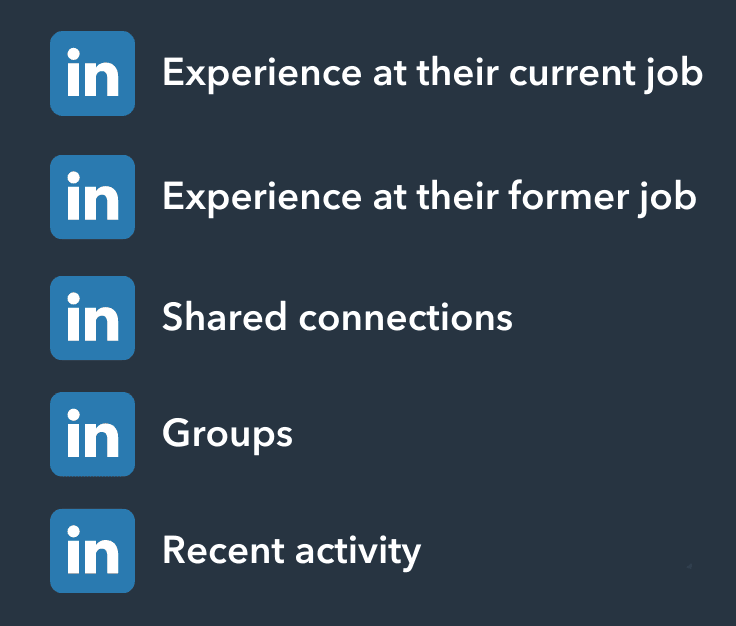
You can also do a quick search to see if their organization’s name has come up in the news lately. Watch or listen to interviews they’ve participated in, and take note of any recent trade shows they’ve attended.
All of these supplemental facts will help build a stronger customer profile that will, in turn, shape the sales proposal.
2. Outline the Specifics of Your Sales Proposal
Following is a non-exhaustive list of sections you might consider including in your sales proposal.
Many of them, like Proposed Solutions and Cost/Fees, should be non-negotiable parts of your document. Others, like Client Testimonials and Case Studies, may or may not be included as part of the actual proposal (but may be used in other places in the sale process). The different components you ultimately include will depend on your unique buyer.
- Title Page
- Cover Letter
- About Us/Company Background
- Market Research
- Challenges
- Goals/Intended Outcomes
- Summary
- Proposed Solutions
- Cost/Fees
- Timeline
- Deliverables
- Case Studies
- Client Testimonials
- Terms/Stipulations
- Next Steps
Opinions vary regarding the appropriate length of a sales proposal. Some say that eight to twenty pages is generally acceptable, while others argue that anything over two to three is ineffective.
Again, there is no one-size-fits-all when it comes to sales proposals. Some industries, organizations, or proposed solutions are quite complex, and sellers should be careful to avoid eliminating important — or adding irrelevant — information for the sake of a somewhat arbitrary length requirement.
3. Draft the Sales Proposal
Once you’ve solidified the specific components you need to include to demonstrate your value to the prospect, it’s time to fill in the details. Build out each component of the proposal using what you learned through your research.
If you can, put the draft away for a day or two before moving on to the next step. This can help bring a bit more clarity to the editing process.
4. Edit and Proofread
The last step before presenting your sales proposal is to make final revisions and proofread. Remember, this is a professional document. It should be engaging, polished, and error-free.
Sales proposals take a good amount of planning and consideration. It may seem tedious, but try to stick to the process. Many sales reps inadvertently treat sales proposals as an afterthought, and unfortunately, that deprioritization shows in the data: only 47% of sales proposals result in a deal.
Put the work into the proposal ahead of time, and you’ll see results.
Best Practices for Writing a Winning Proposal
Keep in mind the following best practices while writing your sales proposals.
Know Your Prospect
While this is a best practice for sales in general, it’s especially relevant for sales proposals: know your prospects inside and out.
Before you create sales proposals, sales and marketing should align to create a detailed ideal customer profile (ICP) and buyer personas.
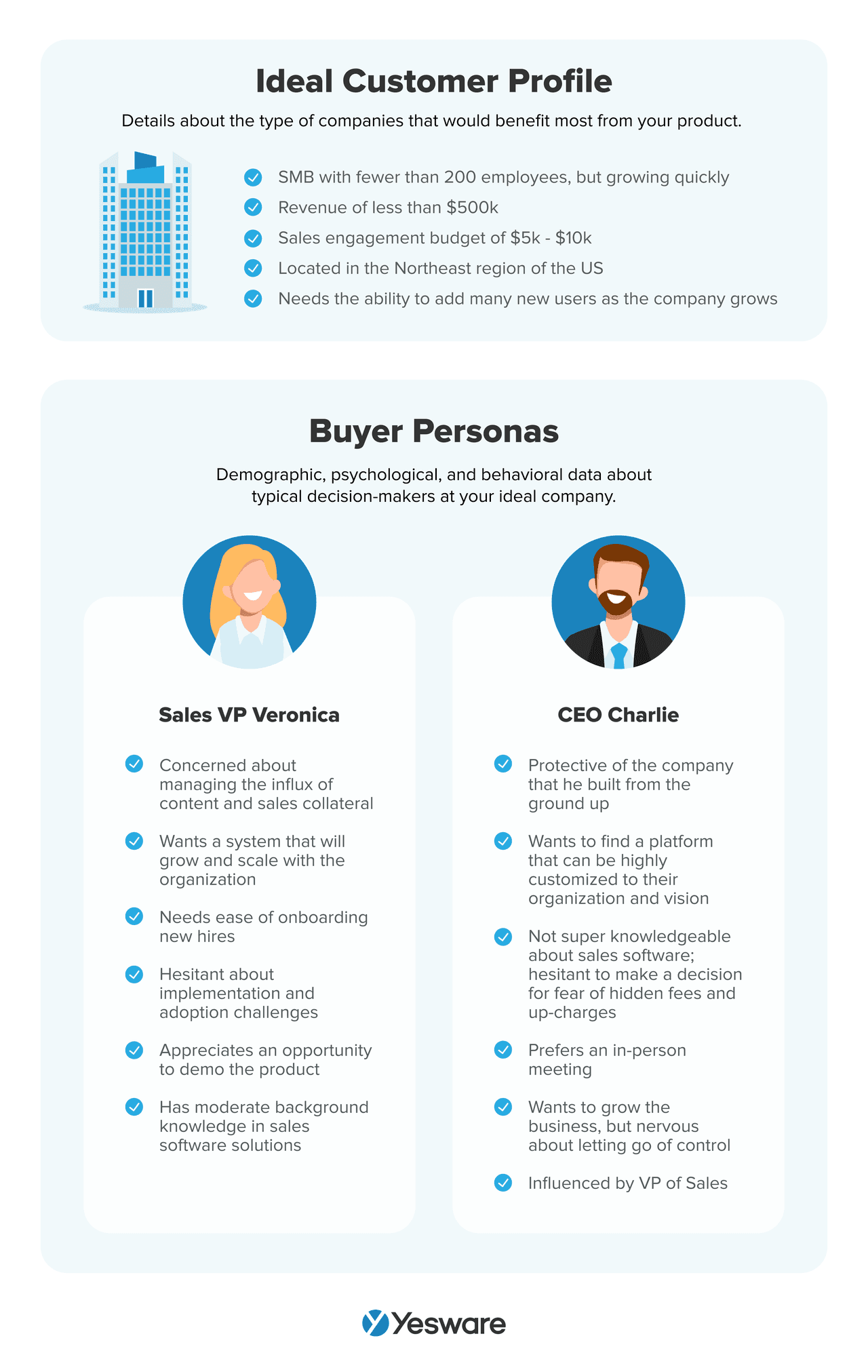 An outstanding sales proposal will require you to go even beyond the ICP and buyer personas. It’s up to you to search every corner of publicly-available data and combine it with what you learned from discovery calls, sales meetings, and/or RFPs.
An outstanding sales proposal will require you to go even beyond the ICP and buyer personas. It’s up to you to search every corner of publicly-available data and combine it with what you learned from discovery calls, sales meetings, and/or RFPs.
Your intel should include, at a minimum, the prospect’s: budget, goals, decision-makers, and timeline. Without those, your sales proposal will be incomplete.
Refine Your USP
Part of what will make your sales proposal so impactful is how well you’re able to set yourself apart from the competition. Sales and marketing should align to clearly define how your teams will position the product and highlight your USP.
It’s important to emphasize that the word “unique” is really crucial to this aspect of your sales proposal — it will end up in that risky yellow zone shown below without a strong USP.
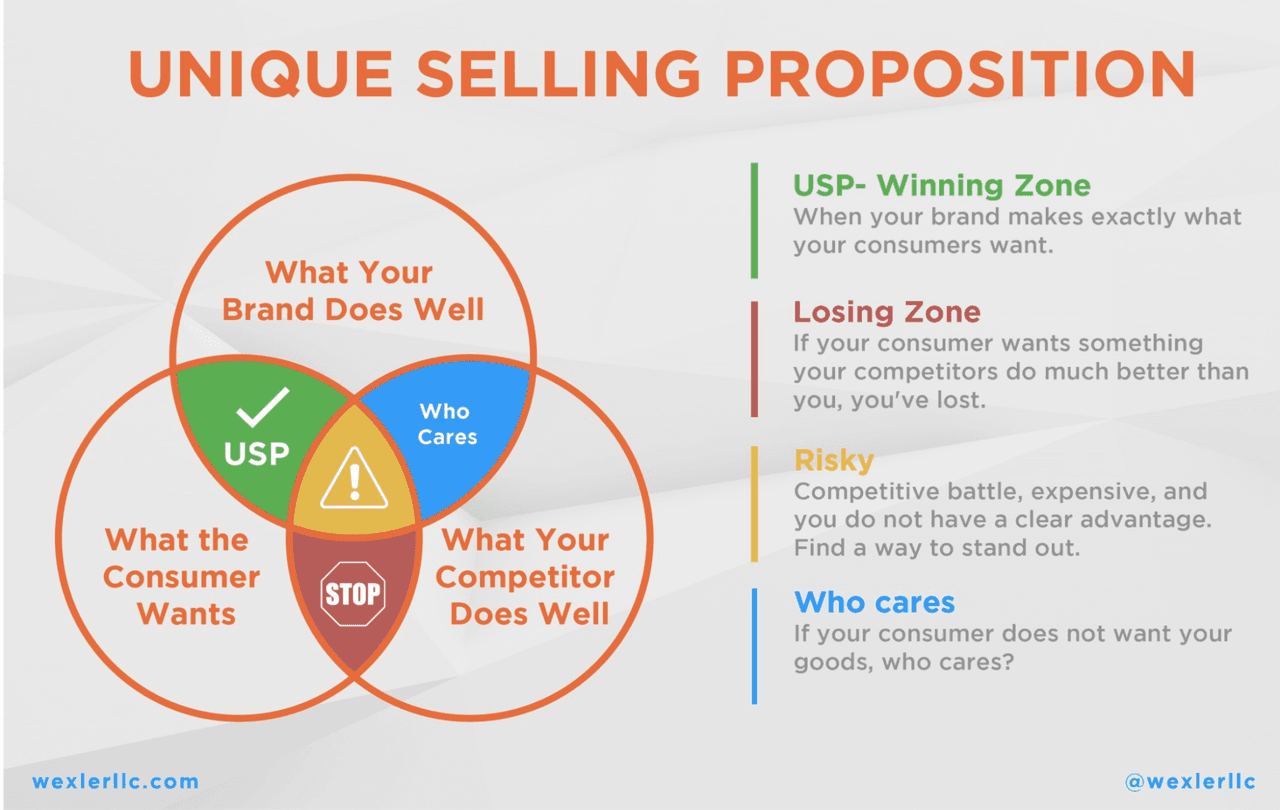
Find a way to stand out that resonates with your prospect’s needs and use that to guide your sales proposal.
Tip: 10 unique selling proposition examples here.
Use Writing Best Practices
A sales proposal is a written document. While most salespeople aren’t necessarily trained writers, that’s not an excuse to neglect the writing best practices that will help the proposal shine.
Everything from structure — headings, bullet points, and short paragraphs are key — to the actual writing itself needs to be carefully crafted in a sales proposal.
If you find yourself with writer’s block, try keeping storytelling in mind. Storytelling is a very effective copywriting tactic because it makes it easy for the reader to connect.
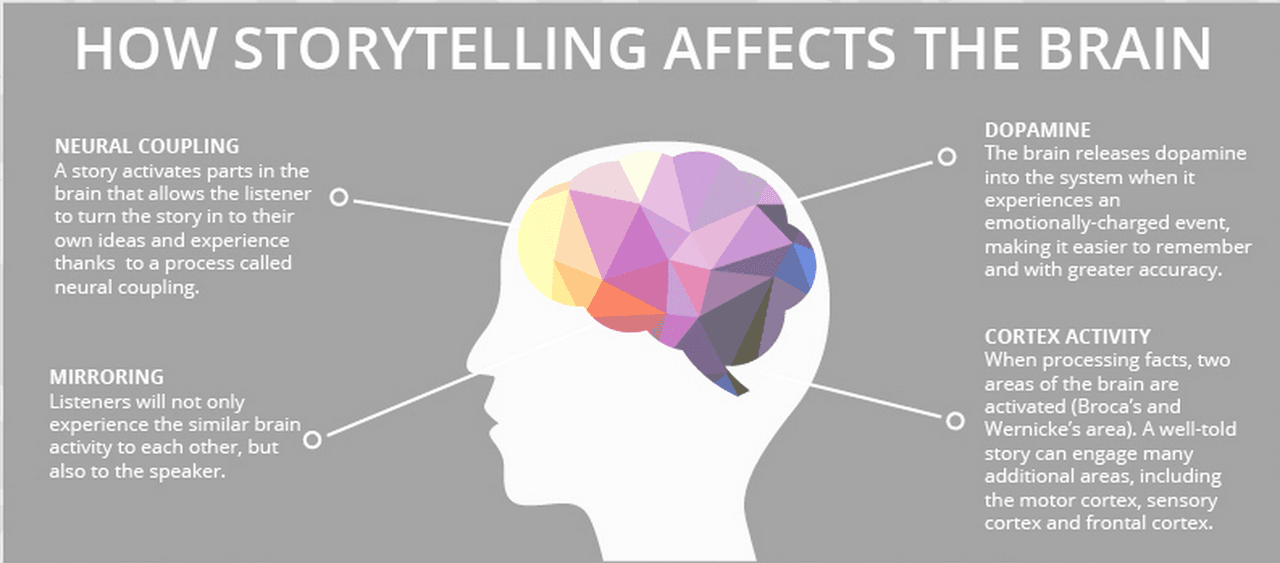
Remember, though, that sales proposals should be succinct. Don’t stray off-topic for the sake of telling a story. But some storytelling principles woven throughout — especially in areas like your company background or proposed solutions — can make the proposal more engaging.
You can also use images in your sales proposal to help paint a more complete picture. Just make sure that they’re high-quality images, and that they add to the proposal rather than distract from it or create unnecessary length.
Tip: Grab psychology-backed tips for writing copy that resonates with prospects.
 Psychology Principles + 13 Power Words for Winning SalesData-backed psychological principles, nonverbal cues, and persuasive phrases to win more deals.
Psychology Principles + 13 Power Words for Winning SalesData-backed psychological principles, nonverbal cues, and persuasive phrases to win more deals.
Build a Template
Just because all sales proposals are unique doesn’t mean you don’t have to start completely from scratch each time.
It’s okay to create a template (or a few) to help expedite the process of creating new proposals for each prospect. Just remember to adapt as much as needed depending on the prospects’ needs.
There’s a sales proposal template included in the next section of this article that can be used as-is or tweaked to fit the needs of your organization.
Provide Social Proof
Although it shouldn’t be the bulk of your proposal, strategically-placed social proof in the document can add credibility to your offer. 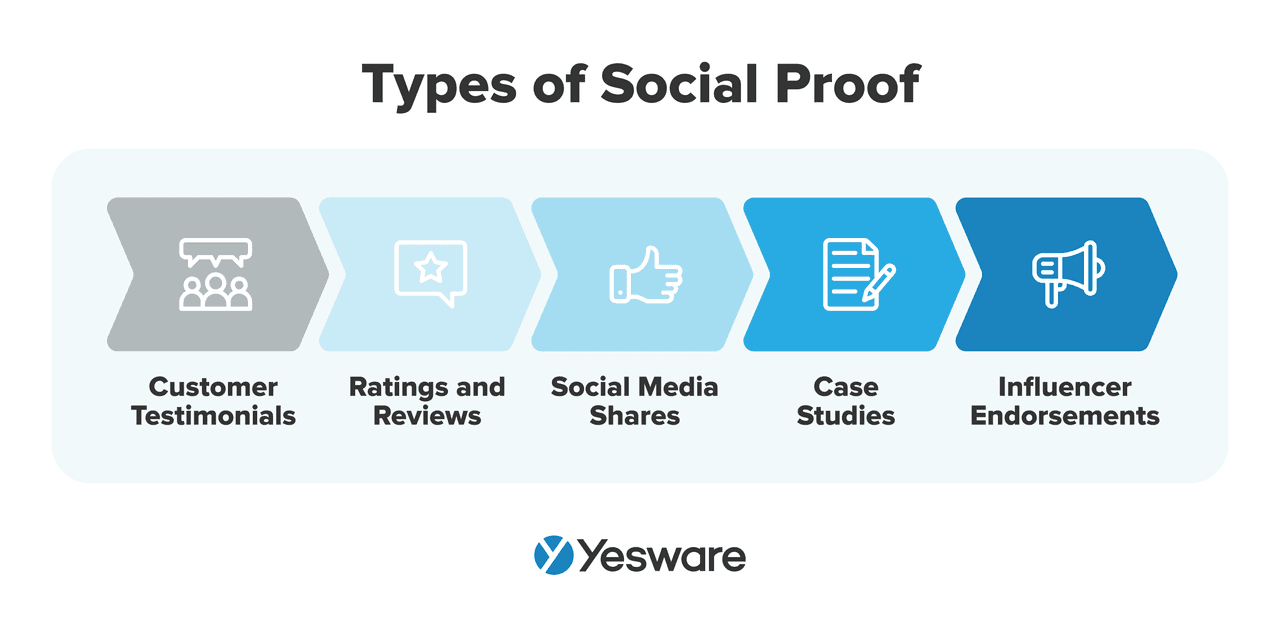 Social proof can include things like case studies, customer testimonials, or (anonymous) data from your most successful customers.
Social proof can include things like case studies, customer testimonials, or (anonymous) data from your most successful customers.
Make It Easy to Say Yes
Wherever you can, remove friction from the prospect’s experience of going through your sales proposal.
For example: if there’s a document to sign, deliver it via an e-sign platform instead of asking them to print, sign, scan, and return.
Another way to remove friction is to maintain structure throughout your document, include:
- a table of contents
- number your pages
- and put headers on each.
These may seem like insignificant details, but they all amount to a more enjoyable process for the prospect. These can add up, and make it more likely that they’ll easily say yes to your offer.
Be Detailed and Transparent With Pricing
The sales proposal is not the place to be coy about what kind of investment a prospect will make if they agree to your offer.
In fact, choosing to omit details about cost can backfire; prospects are likely to feel manipulated without a clear outline of price, fee, and payment scenarios this far along in the sales process.
That being said, it’s okay to also offer information about the potential ROI your prospect stands to achieve by signing on with you. Don’t omit any information about price, but it’s okay to frame it in a positive light if you’re able to offer figures on average ROI and/or competitive pricing.
Give Options if Possible
If your product or service has multiple tiers that could be a good fit for your prospect, include them all in your sales proposal.
Giving prospects a choice helps them feel like they have control over the process. Even if your product or service has only one offer or tier, try to incorporate choices where you can.
Such as: can the prospect choose a color or a size? Can they control when the product is delivered? Can they choose their own customer service plan?
Anywhere that you can offer choice will help prospects feel a sense of control that will, in turn, make them more likely to say yes.
Follow Up
If your prospect doesn’t agree to your sales proposal on the spot — and chances are, they won’t, because they’ll probably need to further evaluate your offer behind closed doors — the next most imperative thing a sales rep can do is to get a follow-up on the calendar.
Up to 80% of sales require five follow-ups, yet only 8% of sales reps follow up that far.
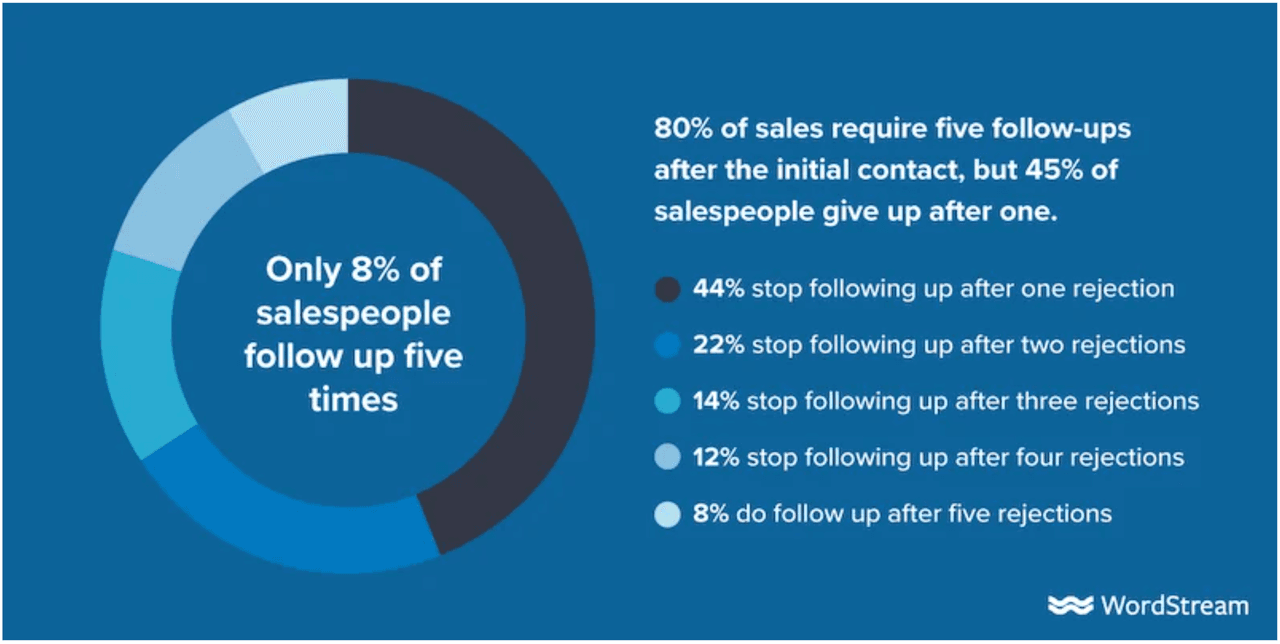
An ambiguous response is not a rejection. Be persistent in the follow-up to increase your chances of securing the deal.
Sales Proposal Templates and Examples
There are two general types of sales proposals: solicited and unsolicited.
Solicited sales proposals are ones that were requested by the prospect. They either sent an RFP to you, or requested a proposal during another sales conversation.
Solicited proposals are usually easier to put together than unsolicited ones, because specifics about needs and budget are more readily available.
Unsolicited sales proposals are those that were not requested by the prospect. These are basically “cold” proposals.
Unsolicited proposals can be a bit challenging because you may not have all of the information you need to give a complete picture of your offer. For example, you may not know specifics about their budget constraints.
Regardless of the type of proposal you’re creating, there are templates you can follow to get the process started.
Following is a basic outline that sales teams can use as they create customized sales proposals for prospects. Note: included here are both a content template to be added to or edited as needed, as well as a few visual options to help you generate ideas.
Content
Most sales proposals include at least some of the following components:
- Title Page
- Cover Letter
- About Us/Company Background
- Challenges
- Pain Points
- Goals/Outcomes
- Proposed Solutions
- Pricing Tiers
- Cost/Fees
- Timeline
- Qualifications and Expertise
- Case Studies
- Client Testimonials
- Customer Data
- Market Trends and Information
- Terms
- Next Steps
- Conclusion
Remember to optimize each section for length and conciseness. Depending on your industry and target market, a thorough sales proposal may be anywhere from two to twenty pages. Instead of focusing on length, work to ensure the proposal is not a word too long or a word too short.
Layout
Just like the content inside, a sales proposal’s design is also entirely unique. Some have graphically-designed cover pages, and some cut right to the chase with an introduction directly on the first page.
How you design your sales proposal is entirely up to your team, the content you need to include, and the buyer’s preference.
The sales proposal template below launches into the company background and history right on the cover page.
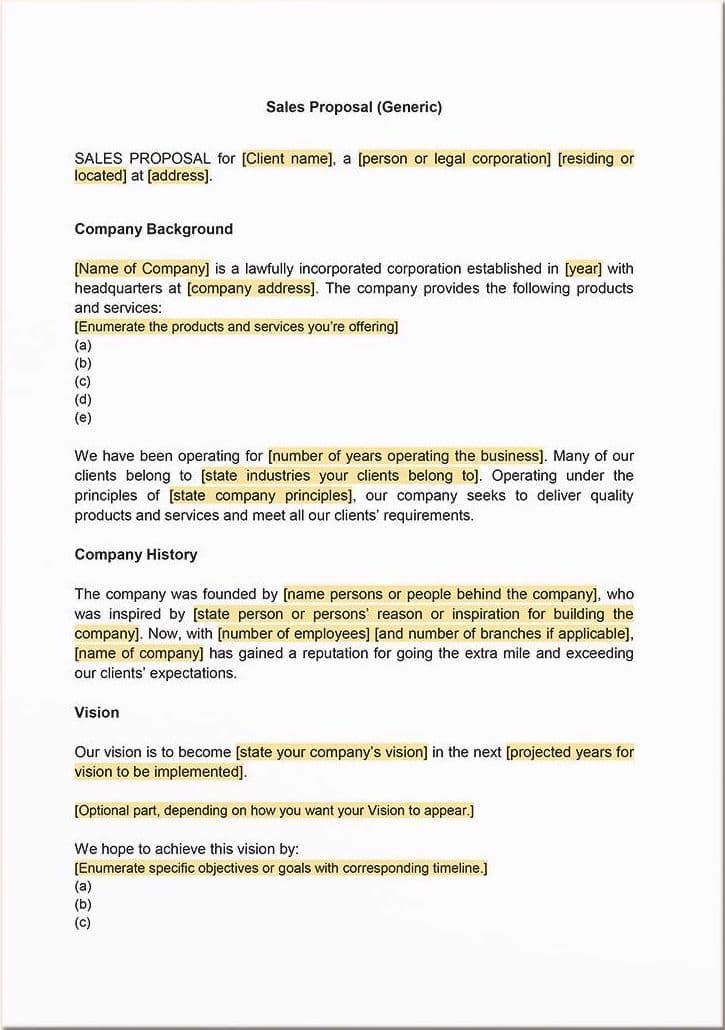
This next one goes as far as putting price on the cover page.
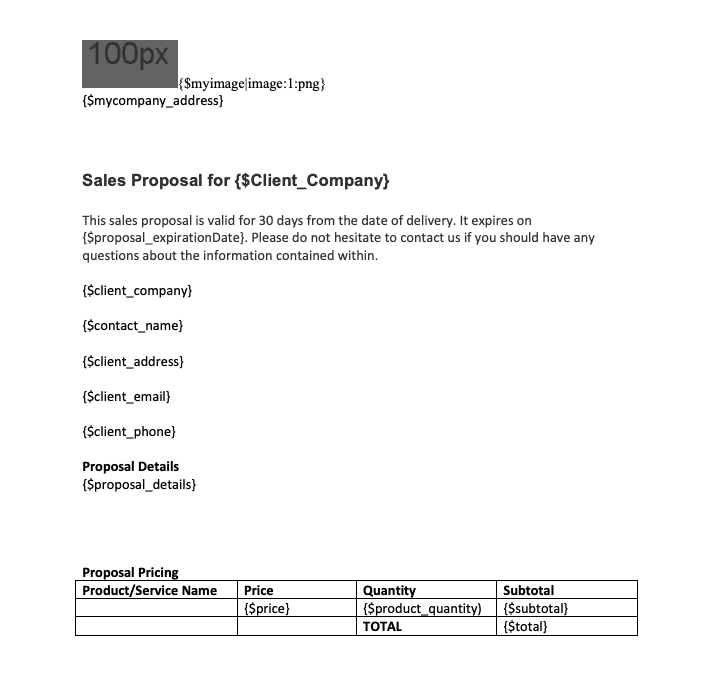
This one utilizes the cover page to display branding, making the sales proposal look like a legitimate book.
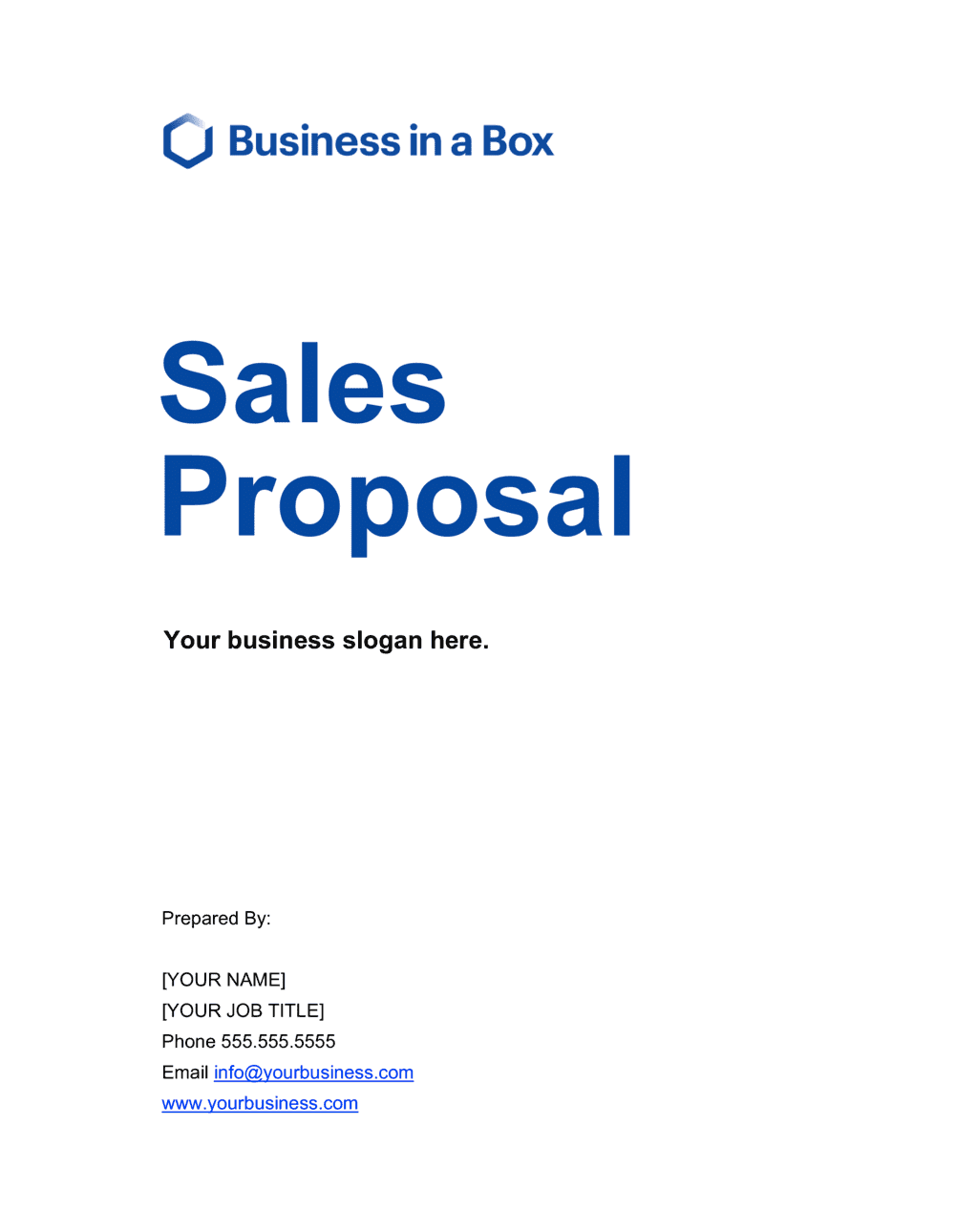
Below is a one-page proposal for sellers that need to be ultra-succinct.
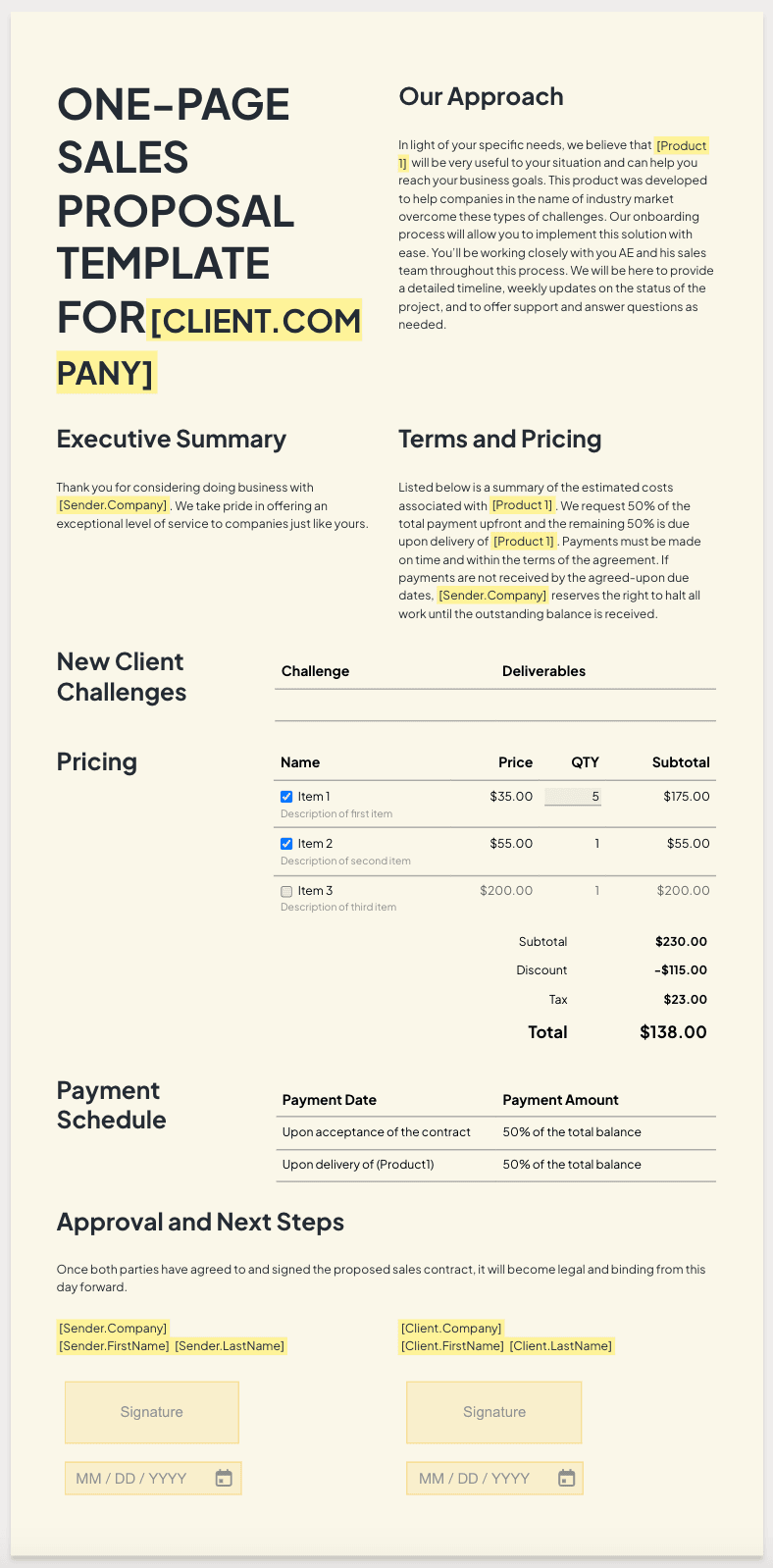
Finally, here’s one that offers a balance between visual impact and important information on the front page.
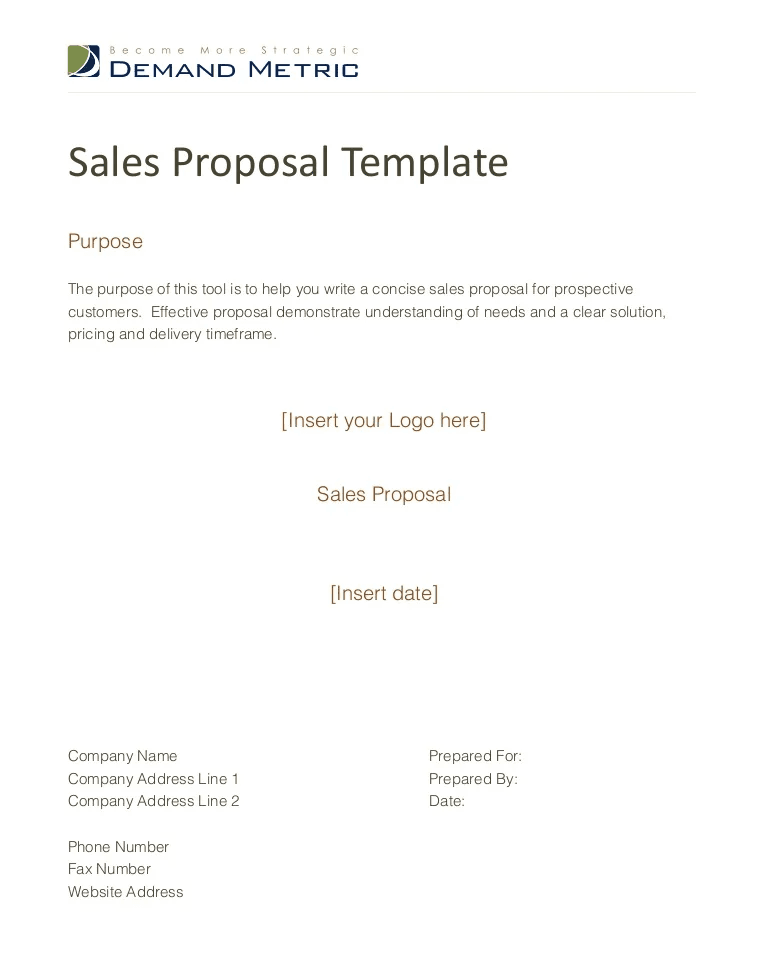
There is no right or wrong way to create your sales proposal template. The important part is that your sales and marketing team align to design a document that is most likely to resonate with your target market.
What to Do After You Send Your Proposal
There are three potential outcomes after you send your sales proposal:
- The prospect responds and accepts your proposal
- The prospect rejects your proposal
- And the prospect doesn’t respond at all
If your proposal is accepted — fantastic! No need for any further action on your part, other than getting the prospect (now customer!) set up with your customer success team so that they can start the onboarding process. Don’t forget to occasionally check in with them for an added personal touch.
If your proposal is rejected — bummer. It’s frustrating to put a lot of effort into something like a sales proposal only to hear it missed the mark. It’s okay to feel disappointed, but try to channel that feeling into something productive.
First, use your intuition and try to determine whether there’s room for negotiation. Skilled salespeople can usually tell if there’s still some opportunity, or if the door is closed for good.
If it’s the latter, it’s okay for sales reps to inquire what went awry. Many prospects will be happy to tell you (hopefully politely) why they opted out of the deal. Don’t use this information to be pushy, though. Instead, use it to further refine your lead generation/qualification strategies and your sales proposal.
If you receive no response from the prospect after sending your sales proposal, you need to follow up. As discussed earlier in this article, follow-ups are sometimes the only thing missing between a lost deal and one that’s easily won. Persistently follow up until you receive a definitive answer.
Do you have a process for writing sales proposals? What do you think makes yours successful? What components can you improve upon?
Get sales tips and strategies delivered straight to your inbox.
Yesware will help you generate more sales right from your inbox. Try our Outlook add-on or Gmail Chrome extension for free, forever!
Related Articles
Casey O'Connor
Casey O'Connor
Casey O'Connor
Sales, deal management, and communication tips for your inbox
![How to Write a Winning Sales Proposal [Templates + Examples]](/blog/_next/image/?url=https%3A%2F%2Fwww.yesware.com%2Fwp-content%2Fuploads%2F2022%2F10%2Fsales-proposal-yesware.jpg&w=1984&q=75)
